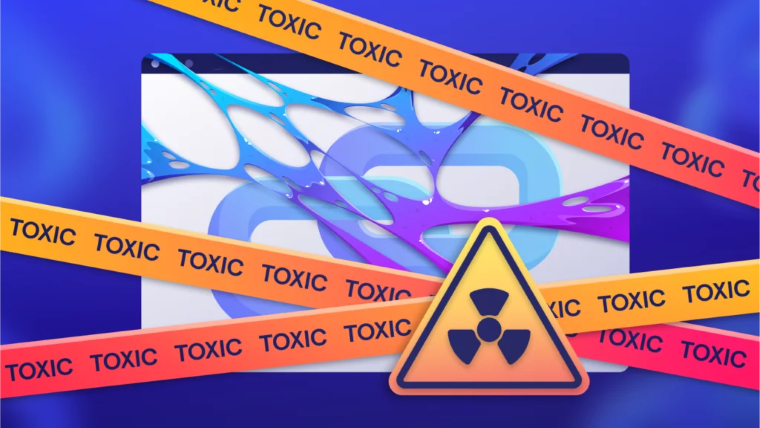
Picture this: You’ve done everything right for your site’s SEO—your page speed is optimized, you have great keyword targeting, and your on-page UX optimization is perfect.
You’ve built links and rankings are going up.
Then suddenly, your traffic plateaus and starts trending down for some reason. Quickly.
What’s going on?
One possibility is that you have toxic backlinks. Especially if you worked with a shady link building agency in the past.
In this guide, we’ll show you everything you need to know about toxic backlinks and how to get rid of them for good.
What are toxic backlinks?
Toxic backlinks are low-quality links that point to your site from spammy sources like link farms, blog comment spam, or paid link schemes. Because these types of links are coming from sources with little to no authority, Google devalues them in its algorithm.
In the past, SEOs would try to game Google’s algorithm by building as many backlinks as possible from any source they could find. That approach doesn’t work or last for very long—you’re better off getting one or two high-quality links from authoritative sources than several artificially placed links from low-quality sites.
Do Toxic Backlinks Hurt SEO?

When you have spammy links pointing to your site, it’s a sign to Google that your site may be involved in link schemes or other black hat SEO practices.
As a result, your site may get penalized by Google and face the following consequences:
- Your website’s traffic will drop suddenly and significantly
- Search rankings will plummet
- You’ll receive a manual action message from Google Search Console
- Your site may get completely removed from search results
In short, yes—toxic backlinks can definitely hurt your SEO. Not only will they cause your traffic and rankings to drop, but you could also get blacklisted by Google if the issue isn’t addressed quickly.
That said, Google’s most recent updates tend to ignore these links rather than penalize your site immediately.
How Do I Check For Bad Backlinks?
Google is becoming increasingly adept at identifying and penalizing sites with toxic backlinks. In 2012, the Penguin algorithm update was specifically designed to target and penalize sites involved in link schemes.
But if you relied on Google to catch every low-quality link pointing to your site, you’d need to scour Google Search Console.
And you’d have to watch your site health and organic traffic religiously, manually checking every single link that comes in.
Especially if you don’t know how to assess link quality, you can do it the easy way—with an SEO tool.
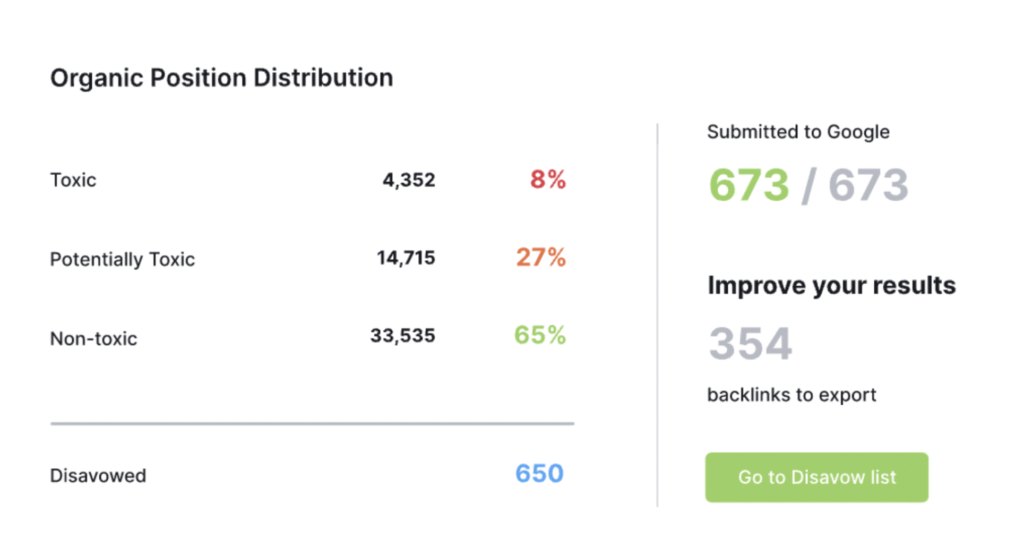
Moz and Semrush both offer toxic link checks via a backlink audit. This is a comprehensive check of your entire backlink profile to identify which could harm your SEO efforts.
The process of finding toxic links is simple:
- You load your site URL into the backlink checker.
- The tool crawls the web and pulls in all the links you have pointing to your site.
- The tool analyzes each link and assigns it a “toxicity” score.
- You’re given a full report of all the toxic links pointing to your site and a list of non-toxic links.
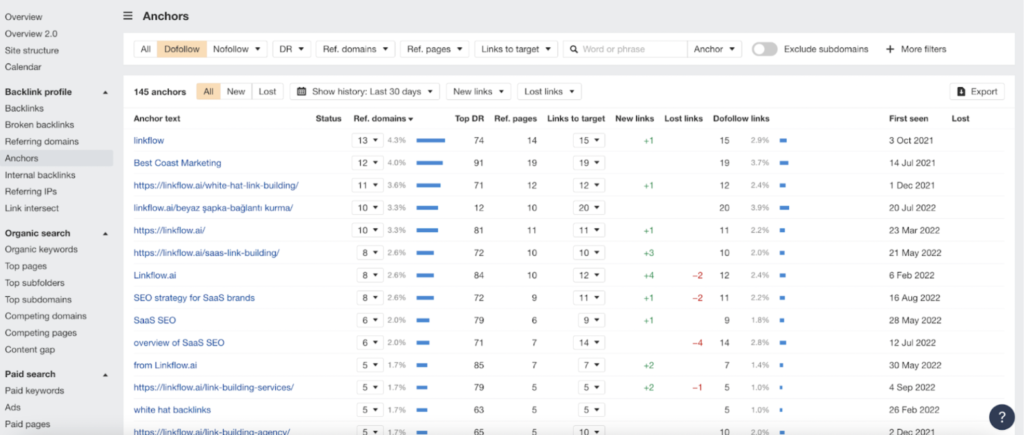
You can also use Ahrefs to check the anchor text of your inbound links. Over-optimized anchor text is a sign that a site may be engaging in link schemes.
To do this, just follow these steps:
- Load your site into Ahrefs Site Explorer.
- Navigate to the Anchors report.
- The “Dofollow” filter allows you to find website links that will improve your search engine ranking.
- Check the “Anchor text” column to see what keywords are being used to link to your site.
Usually, sites whose links happen organically will have lots of branded and natural-looking link placements.
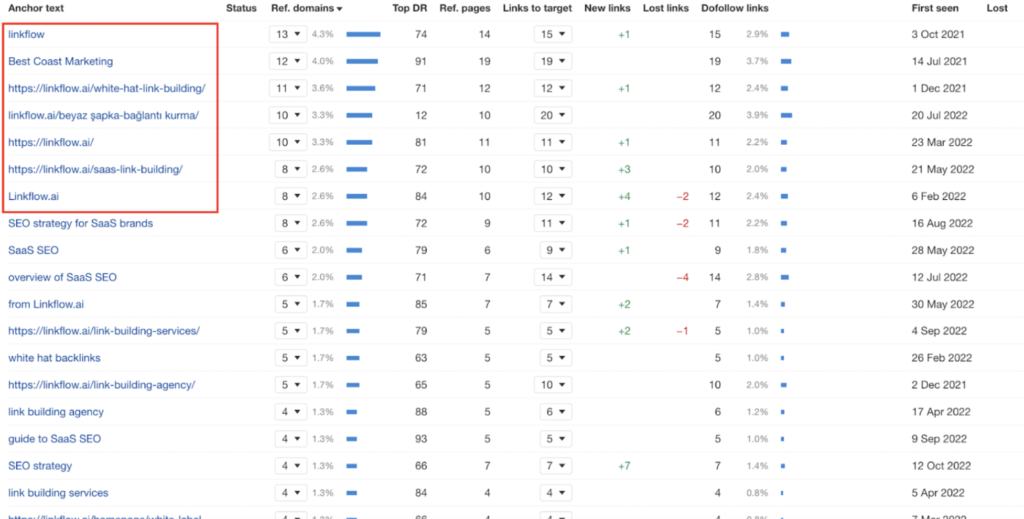
As you can see from our homepage report, branded anchor text pointing to our site is the most common.
If every keyword was an exact match for something we wanted to rank for and they spanned across a range of industries, it would be a sign of over-optimization.
Toxic Scores In SEO
When you check your backlink profile, you may see a score like the one below, indicating that you have a large number of spammy backlinks.

The toxicity score is a metric that measures how many links are considered “toxic” by a backlink checker, based on the number of total links. But remember that modern search engines are well-trained to identify and devalue toxic links, so a high toxic score doesn’t necessarily mean that your site will receive a penalty.
In other words, you shouldn’t obsess over your toxic score. A few toxic links here and there won’t hurt your SEO
Where Do Toxic Backlinks Come From?
As we touched on earlier, spammy links can come from several sources.
- Link Farms: Spammy websites with the sole purpose of selling links
- PBN Paid Links: Private Blog Networks that sell links for the express purpose of manipulating search engine rankings
- Blog Comment Spam: Comments on blogs and forums that include a link back to the commenter’s website
- Directory Submissions: Sites that accept payment for inclusion in their directory
- Article Directories: Websites that accept payment for publishing articles with links back to the original site
- Scrapers: Programmatically generated pages that scrape the internet and add thousands of links to a page with spammy anchor text
In most cases, these links are fairly easy to spot. The site will usually be low-quality, with little to no original content.
The site may also be packed with advertisements, and the link itself will often be buried in the middle of a long paragraph of text.
Sometimes, however, it can be difficult to tell whether a link is toxic.
What Happens If Your Site Has Toxic Backlinks?
Google is fairly good at weeding out or ignoring most bad links. But if your site has lots of toxic backlinks, you should consider removing them only if your traffic has taken a considerable hit (more on this later).
You could do this in one of two ways:
- Find the site owners and ask them to remove your link from their page.
- Use the Google Disavow Tool to tell Google to ignore certain inbound links.
If you have a lot of spam backlinks, it’s probably not feasible to track down every site owner and ask them to remove your link. In this case, you can use the disavow tool.
Should You Remove Them?
Whether or not you remove them depends on a few factors.
- Are you losing tons of traffic?
- Are the links causing you to see a drop in rankings?
If the answer to any of these questions is yes, then you should remove them. If not, then you may want to leave them alone.
How to Remove Toxic Backlinks With The Disavow Tool
If you decide to disavow links, this should be your last resort. Treat this tool like a scalpel rather than a machete.
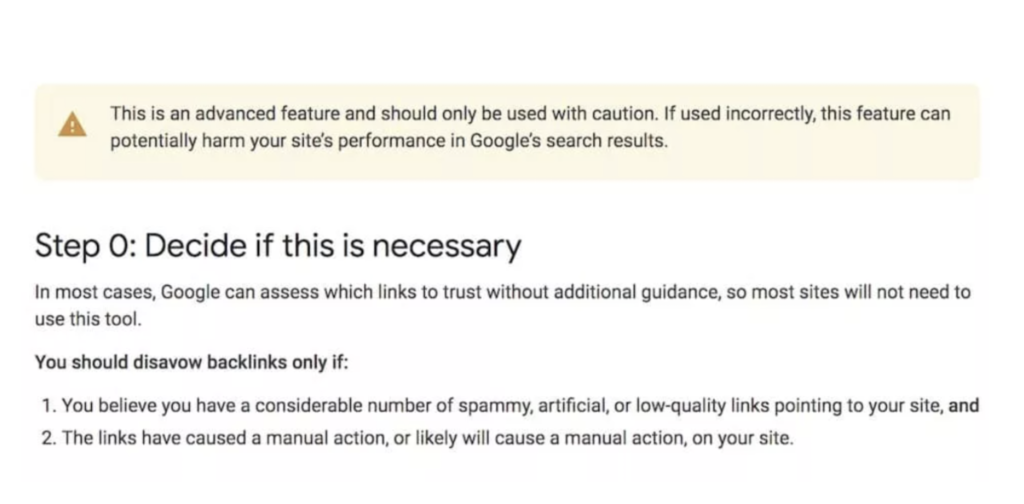
As mentioned previously, only use this tool if you feel it’s absolutely necessary. If you see a huge number of incoming links that correspond to a significant drop in traffic and these links are spammy in nature, it might be worth disavowing them.
To use the disavow tool, you’ll need to follow these steps:
- Create a text file listing all the links you want Google to ignore. You cannot disavow entire subpaths and domains, only individual links. This text file must be encoded in UTF-8 or 7-bit ASCII. It must also end in “.txt”
- Upload the disavow file to the tool page. From there, you’ll choose the file you created and submit it.
- Google will then process the file and disavow the links listed therein. This process may take a few weeks.
You don’t need to worry about disavowing dead links either.
Once this is complete, you’ll see a message in the disavow tool interface confirming that your links have been processed.
Focus On Quality Links, Not Toxic Ones
Don’t spend all your time focusing on toxic backlinks. Instead, you’ll get a better ROI by focusing on building higher quality links.
Here are some metrics to look for::
- The site’s Domain Rating or Domain Authority
- If it’s a link insert, the pages URL Rating (UR)
- The quality of the site’s content
- How relevant the site is to your niche
How do you land links like these?
Here are a few ways to do it:
- Create authoritative content that others will want to link to (e.g., statistics, studies, valuable industry insights, a press release, etc.).
- Build relationships with other thought leaders and influencers in your industry.
- Engage in niche-specific guest blogging and link to your site from high-quality guest posts.
- Fix broken links on other sites and ask for a link back.
- Reclaim unlinked brand mentions with a polite email asking for a link.
And if navigating the complicated world of SEO and link building is overwhelming, consider working with an experienced white hat link building agency.
Ahem…
Like us!

Nick Dyer, SEO Analyst
Nick started his SEO journey in 2017. Currently, he resides in Austin, TX. When it comes to his SEO experience, he’s worked with million dollar brands and builds his own affiliate websites in his spare time. One of his greatest passions is travel and trying new foods. He’s been to Italy, Spain, Australia, Greece and more.
